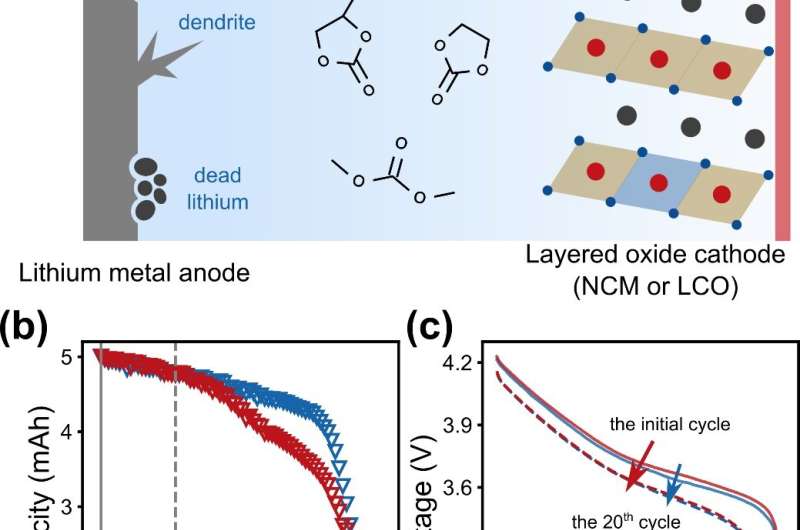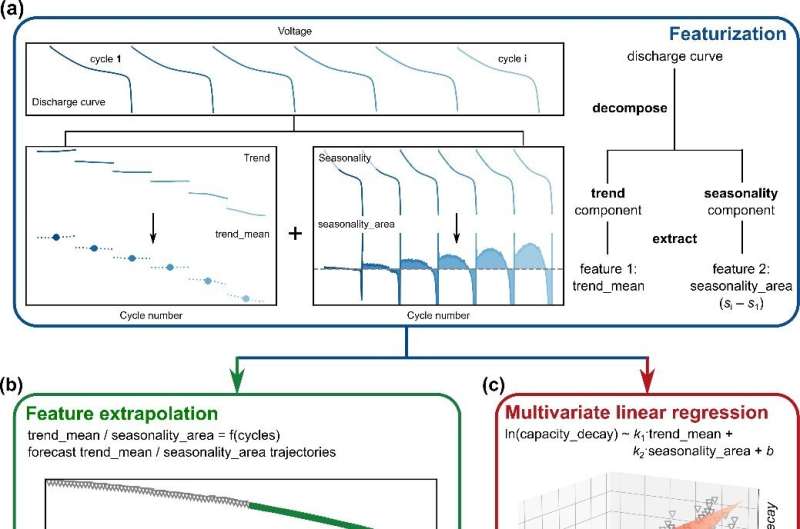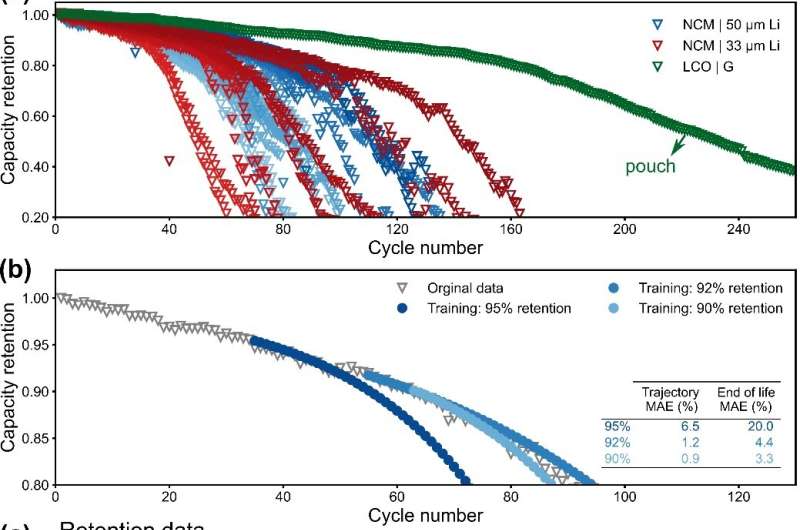
With the long-term goal to realize carbon neutrality, lithium batteries have acquired a growingly central role in the development of human society. The accurate yet efficient prognosis of battery state of health (SOH) remains vital in ensuring a safe and reliable operation. In addition, as the demand to increase battery energy density continues to grow, the development of novel, high-energy-density battery systems such as lithium metal batteries is of paramount significance.
Conventionally, experiments that measure battery lifespan and SOH are adopted to evaluate performance, thereby assisting the development and evolution of novel battery systems. This kind of process, however, normally requires a long evaluation cycle, which inevitably hinders battery developers and users from efficient production, use, and optimization. On the other hand, informatics and data science have brought new opportunities to battery prognosis. These data-driven or machine-learning-based methods exhibit the great potential to unveil hidden information from the battery degradation data of early cycles and generate forecasts on future performance.
So far, most data-driven approaches for battery prognosis are focused on predicting the performance of commercial lithium ion batteries, which usually require large dataset consisting of high quality data. When exploring novel battery systems such as lithium metal batteries, however, these kinds of methods are less suitable as the dataset size as well as the data quality is rather limited. It is therefore extremely important to develop a generalizable battery prognosis method that is compatible with small datasets and can endure compromised quality data.

Recently, a team led by Prof. Xinyan Liu and Prof. Hong-Jie Peng from Institute of Fundamental and Frontier Sciences at University of Electronic Science and Technology of China developed a generalizable, online approach that can forecast the capacity degradation trajectory of lab-assembled lithium metal batteries. This approach leverages the time series decomposition method to extract physically meaningful features from battery discharge curves, realizing an online prediction for a single cell using only its early degradation data without the need to build large, high-quality offline training set.
The robustness and generalizability of this approach also allows for the demonstration on a compromised quality dataset consisting of batteries varying in battery architectures and cycling conditions, with superior accuracy for end of life (defined as the number of cycles at 80% capacity retention) and degradation trajectory prediction with average errors of 8.2% and 2.8%, respectively.
Lastly, the features formulated in this work are also demonstrated to provide physical insights, the incorporation of which into advanced battery characterization methods can further assist the understanding of battery degradation mechanism and enlighten the development of better batteries. The work entitled “A generalizable, data-driven online approach to forecast capacity degradation trajectory of lithium batteries” was published in the Journal of Energy Chemistry. This work received experimental data support from Prof. Jia-Qi Huang’s research group at Beijing Institute of Technology.

This work is mainly focused on forecasting the cycling performance of lithium metal batteries consisting of layered oxide cathode and organic liquid electrolyte. The cycling performance and discharge voltage curves of two example NCM | Li batteries are further compared. It is notable that the cycling performances of the two LMBs, though significantly different at a later stage, are hardly distinguishable in early cycles. In contrast, their discharge curves have already started to deviate. Such a comparison motivates the concept of leveraging discharge curves for featurization.
Reactive electrolyte additives improve lithium metal battery performance
Xinyan Liu et al, A perspective on the electrocatalytic conversion of carbon dioxide to methanol with metallomacrocyclic catalysts, Journal of Energy Chemistry (2021). DOI: 10.1016/j.jechem.2021.04.059
Citation:
Forecasting capacity degradation of lithium metal batteries using a data-driven approach (2022, January 7)
retrieved 7 January 2022
from https://techxplore.com/news/2022-01-capacity-degradation-lithium-metal-batteries.html
This document is subject to copyright. Apart from any fair dealing for the purpose of private study or research, no
part may be reproduced without the written permission. The content is provided for information purposes only.
For all the latest Technology News Click Here
For the latest news and updates, follow us on Google News.
